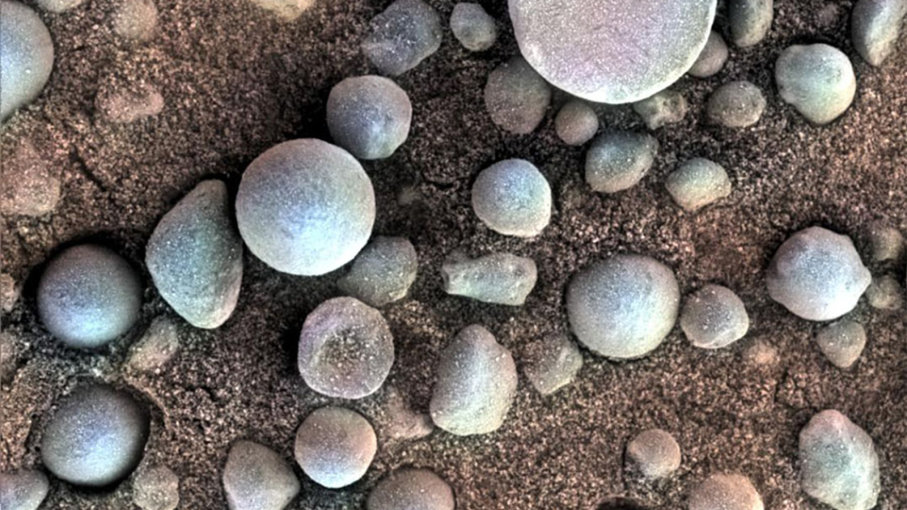What Are the ‘Blueberries’ on Mars?

The small spherules on the surface of Mars in this close-up image are near Fram Crater, visited by NASA’s Mars Exploration Rover Opportunity in April, 2004. The area pictured is 1.2 inches (3 centimeters) in width. NASA/JPL-CALTECH/CORNELL/USGS
After NASA’s Opportunity Rover landed on Mars in 2004, the probe revealed a puzzling phenomenon — tiny spheres, or spherules, just one-eighth of an inch (0.3 centimeters) in diameter, embedded in Martian rock. They appeared dark blue due to a high concentration of the mineral hematite, an iron ore. According to NASA, the tiny objects presented a minor problem for Opportunity, because they obstructed the grinding tool that the probe used to gather samples of the Martian surface.
The spherules were dubbed blueberries, after one scientist observed that the objects resembled blueberries in a muffin, as this 2004 article from Astrobiology Magazine notes.
But the Martian blueberries were more puzzling than appetizing, as scientists wondered how they originated and what significance they might have in the red planet’s natural history. As Astrobiology reported, some scientists initially hypothesized that the blueberries were volcanic ash propelled into the Martian atmosphere, where the ash formed tiny globes before falling back to the surface. Others believed that they formed when water flowed through rock and carried away minerals that then precipitated and formed spheres.
More recently, in 2014, scientists suggested the blueberries actually were the remains of small meteorites that crashed into the Martian surface, as this 2014 National Geographic article describes.
Now, a paper by researchers from Japanese, Mongolian and British institutions, published in December 2018 in the journal Scientific Advances, supports the idea that the blueberries were formed by water. The scientists studied analogous iron-ore formations on Earth. They found that similarities to the Martian blueberries, combined with evidence of the influence of acid sulfate water on Mars, suggest that the blueberries also formed from the dissolving of carbonate spherules that were possibly formed in the dense atmosphere of early Mars.
But as this Space.com article on the research details, scientists can’t fully solve the mystery until they have a probe with more sophisticated instruments yielding higher resolution on the part of the Martian surface where the blueberries were discovered. The Mars 2020 Rover will have such capabilities, but unfortunately it will be exploring a different area on Mars.



 Creators of mankind
Creators of mankind Description of “Tall white aliens”
Description of “Tall white aliens” Where they came from?
Where they came from? About hostile civilizations
About hostile civilizations The war for the Earth
The war for the Earth “Tall white aliens” about eternal life
“Tall white aliens” about eternal life Video: “Nordic aliens”
Video: “Nordic aliens” Aliens
Aliens Alien encounters
Alien encounters The aliens base
The aliens base UFO
UFO Technology UFO
Technology UFO Underground civilization
Underground civilization Ancient alien artifacts
Ancient alien artifacts Military and UFO
Military and UFO Mysteries and hypotheses
Mysteries and hypotheses Scientific facts
Scientific facts


















